
Safety is the priority for the current FIA management, and they want the sport to be entertaining and, at the same time, safe for the people involved in the event. In the previous blog, we saw the safety factors and features associated with the drivers, and in this blog, we will see the safety involved with the cars.
The Tub:
One of the most critical safety parts in the F1 car is the survival cell – also commonly known as “the tub.” When the car meets with an accident, the main thing to keep in mind is ensuring that the energy is dissipated away from the tub. The front end and the rear end of the car are designed in such a way that they crumble and absorb the energy. The engine and other parts are designed to sheer away, leading to the car slowly decelerating and coming to a halt. This reduces the impact in the tub, giving the driver a greater chance of survival.
The tub is made of carbon composite materials. Carbon is very light, rigid, and thin. The car also has additional zylon anti-intrusion panels, which help prevent any projectiles from penetrating the cockpit. The tub also has a fire suppression system that can be turned on by the driver and a medical warning light that can provide information to the extraction team as to the extent of damage to the tub. In case of heavy damage to the tub, they need to be more careful when extracting the driver. As the tub is made of carbon, if broken, it can be salvaged and reworked to recreate another tub in case of an accident. This makes it safer for the environment.
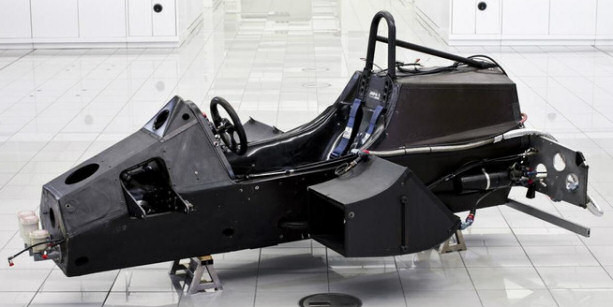
Nose Cones:
The front and rear ends are the most common areas where the F1 cars are to take a blow. Several tests are done on them before the cars can be driven on the track. Usually, safety tests only need to be passed with a minimum margin, but that isn’t the case for F1. The tests are very difficult to clear. Teams just try to fit into the tests as if they overdo it, which would mean that the car would get heavier and affect the performance.
The nose designs are interesting as they completely oppose the rules of aerodynamics. The concept of a raised nose was brought about in 1990. A raised nose could allow increased volumes of air under the car, helping the performance in straights. This helps the car go faster. The problem with a raised nose is when there is a side impact, and it launches the car over the car in front. It allows the car to climb on top of the car in front of it. This happened in 2007 with Robert Kubica’s crash in Montreal (Fig 1) and marked Webber’s big crash in Valencia in 2010 (Fig 2). These incidents made FIA lower the nose cones.

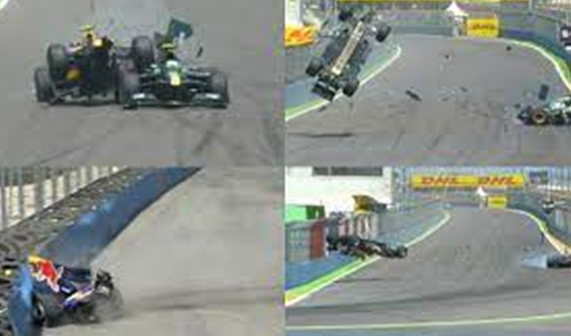
Seat Belts:
Different F1 teams have other suppliers to provide seatbelts. For e.g., Red bull uses Seat belts, which has been supplying seatbelts for F1 cars for the past 16 years. There are a few ways in which manufacturers have found a way to follow the FIAs regulations and still work their way around effective solutions to design and redesign the harnesses to what they are today.
Seatbelts used to weigh around 1 kg in 2005, but the weight has been significantly reduced to 480g to help shed some weight. There are six straps in an F1 car’s harness. You can take these six harnesses and use them to hand a double-decker bus using them. Drivers are tightly strapped in using these six harnesses, and this restricts movement, and the fit has to be just right. The front-end mechanic’s job is to strap in the driver and ensure he is ok.
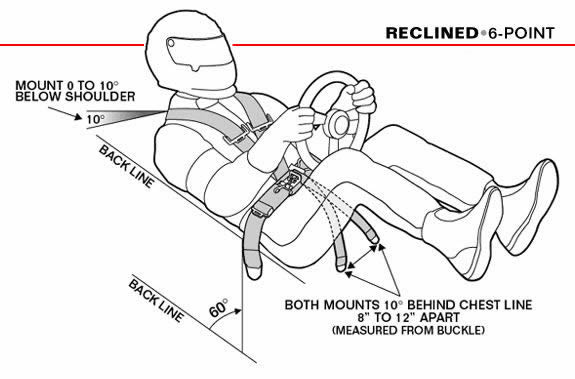
Cockpit:
The cockpit is where the driver is seated. It holds the seat belts in place. The drivers wear pads around their knees to prevent any injuries to the knee when there is an impact. The cockpit surrounds are filled with urethane foam, fitted around the worker after he is strapped in. The foam helps absorb the energy from impacts during the race. The form acts differently in different temperatures, and hence the FIA issues an official temperature before the race, and the surround that is suited for those conditions is fitted in. if the ambient conditions are above 30 degrees, there will be a blue surround, and if it is below 30 degrees, then you will see a pink surround. Light blue foam is used in very cold temperatures.
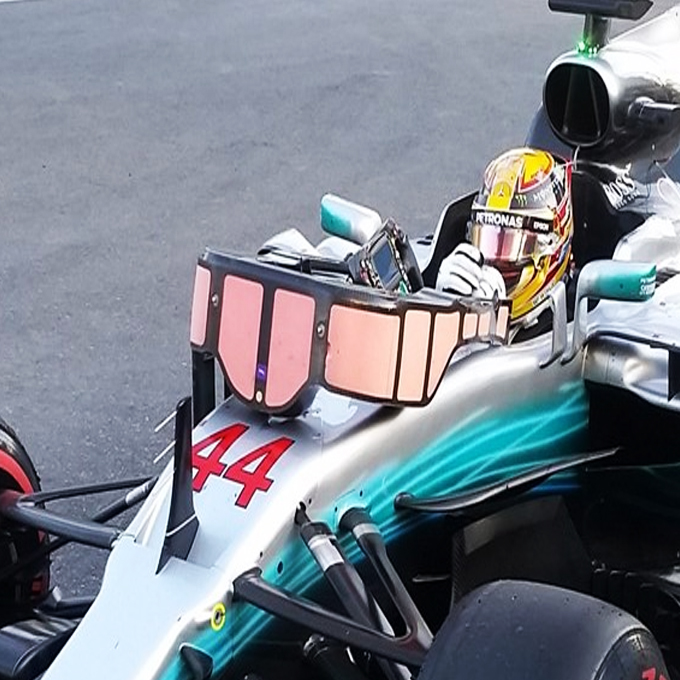
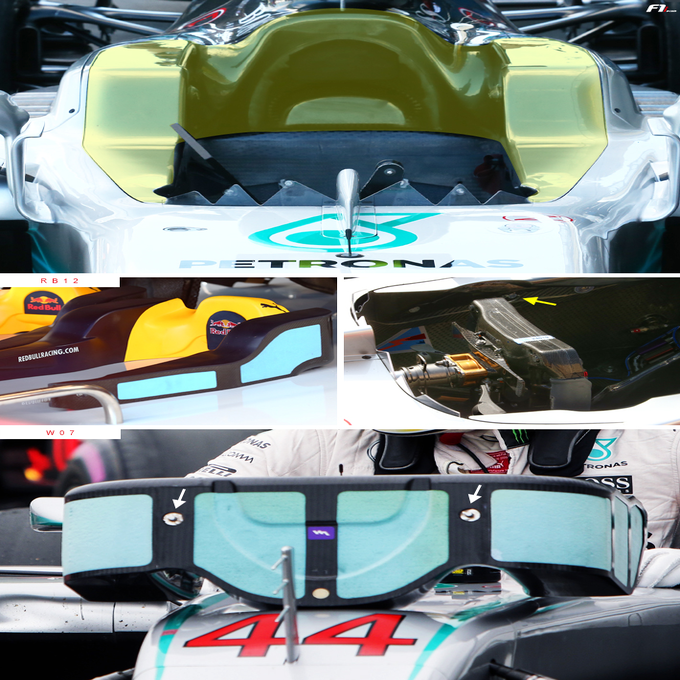
Halo:
One of the most controversial changes in F1 was the introduction of the Halo, a few people supported the idea, and a few people said that it would hinder the sight of the drivers. There are a number of incidents in F1 where drivers have died due to head injuries. It offers protection when two cars crash into each other. It also protects the driver against environmental impacts and foreign objects impacts like being hit by a tyre or large pieces of debris. It also protects the driver if the car rolls over. The halo is made of titanium. It has the capacity to withstand a 20kg wheel impacting a car at 225kmph. The halo was introduced in 2019; it is Soo strong that if you drop a double-decker bus on the halo from the 2nd story of a building, it can help the driver survive.

Black Box:
At the beginning of part 1, I start the blog by stating that FIA learns from its mistakes. When an accident occurs during the race, the FIA investigates the reasons for the incident. This can be done by recording all the information during the race. The halo has a high-speed camera pointed towards the driver’s head, and this lets us know the impact or injury the driver had sustained and also how the accident happened. There are other sensors throughout the car that give us various information like breaking and accelerating. There is also an accelerometer in the ear of the driver that lets us know the driver’s movements. All this information is stored in the black box. The FIA studies this information, and new rules or changes to existing rules are introduced to help make it safer for the drivers to race.
Apart from the driver and the car, there is another aspect that the FIA spends most of its efforts trying to make the race safer: safety on the track.
In part 3, we will be covering the various steps the FIA has taken to make the race safer by implementing various measures on the track.
Article written by :
Varun Vignesh, HSE Trainer, Green World Group – Dubai .